A nice gun for you today! Derek brought a gun that belongs to a friend of his for me to cast my eye over, so with his consent, I will put a few photos on the web and we can enjoy a little specualtion about the gun together!
It’s a high quality percussion gun signed Joseph Manton on locks and barrel and with the serial number 5692 on the underside of the barrels, the breech block, the inside of both locks and the tang of the trigger guard. By the Manton book that serial number belongs to 1812 ( this gun is not in the book), still in the flintlock era although coming up to the tubelock and pellet lock transition period before the caplock, which this is by the usage in the Manton book. Its about 22 bore double with 30 inch barrels but without the elevator rib that Jo Manton patented before this date (? or a small one?). So it looks as if it is a conversion involving new locks and new breeching, or that it has been renumbered or is from a period later when his numbering MAY have gone haywire. There are a lot of interesting clues in the gun if you can bear to go through them;-
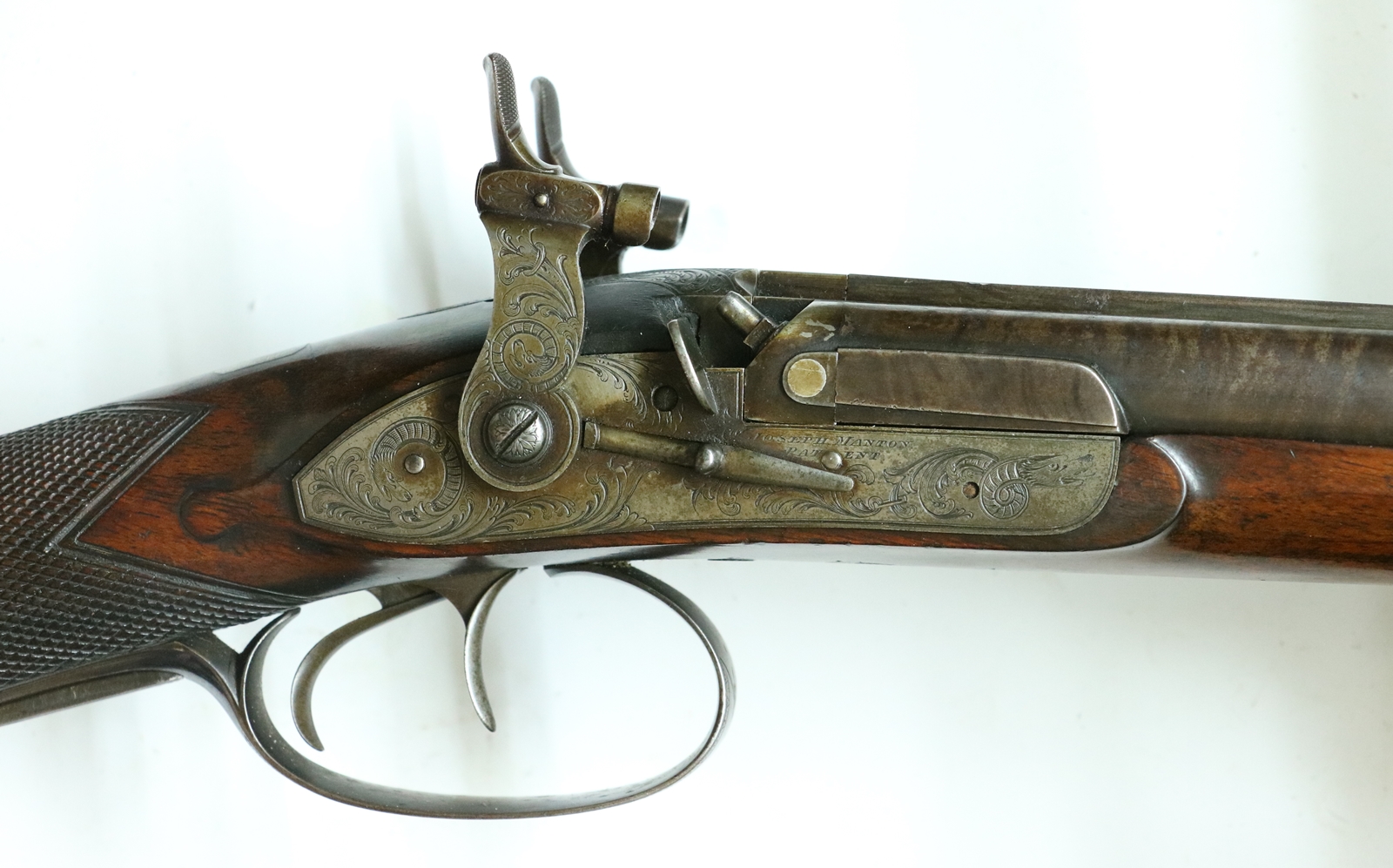
1) It has the cocks with removable hammers – a follow-on from pellet locks and used around 1828.
2) What are those safety catches in front of the cocks doing on a shotgun? (they engage in a slot cut in the back of the cock when its at half cock – I think they are a considerably later feature.
3) If its a conversion the ‘bolsters’ on the barrels above the locks look odd??

4) In addition to the sliding safetys on the cocks there is a grip safety – but it is engraved John Blisset Patent even though Jo Manton claimed to have invented it. There is a burr at the backof the slot that suggests it may be a retrofit. I can’t see Manton putting a grip safety with someone elses name on it!

5) The barrel wording is ‘Joseph Manton’s New Invention by His Majesty’s PATENT’ – a form of words that he appears to have used between 1812 and 1816 and not at any other time? It may have a slightly elevated rib – Manton’s recent Patent – I don’t know what constitutes ‘elevated’.
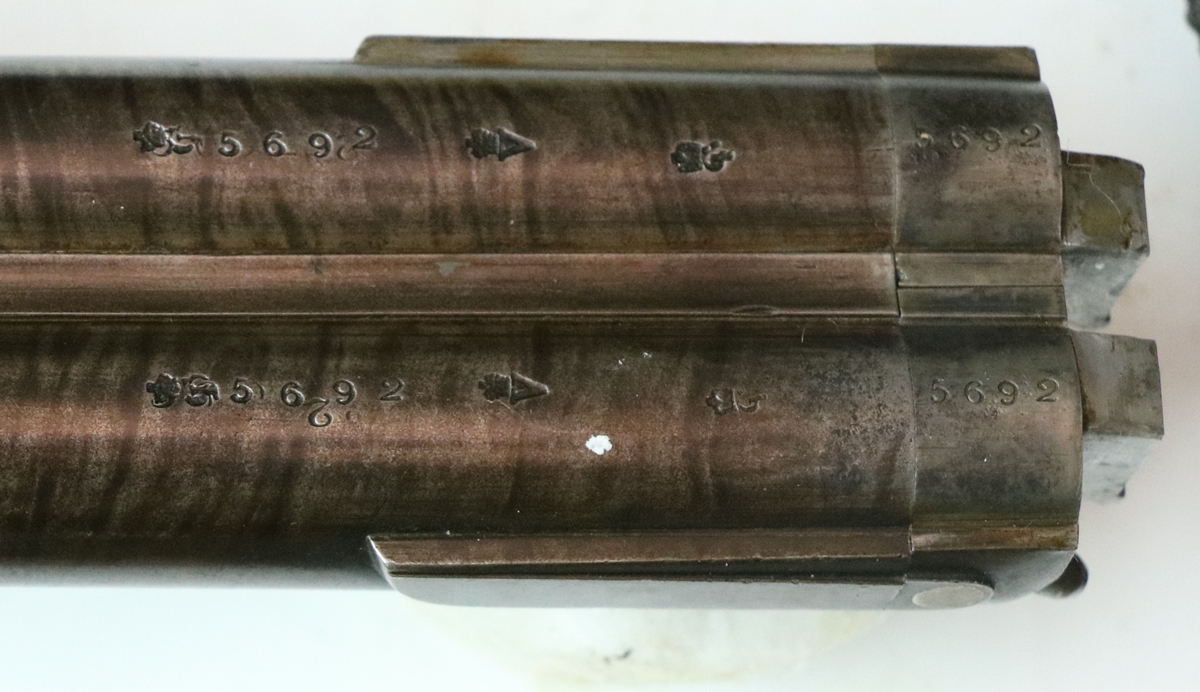
6) The numbering on the barrel looks as if it may have been restamped after previous numbers were dressed out – possibly also the numbers on the breech plugs. One breech plug is a bit misaligned.
7) It has two sets of CP proof marks on the barrel – one set looking as if they have been dressed down.
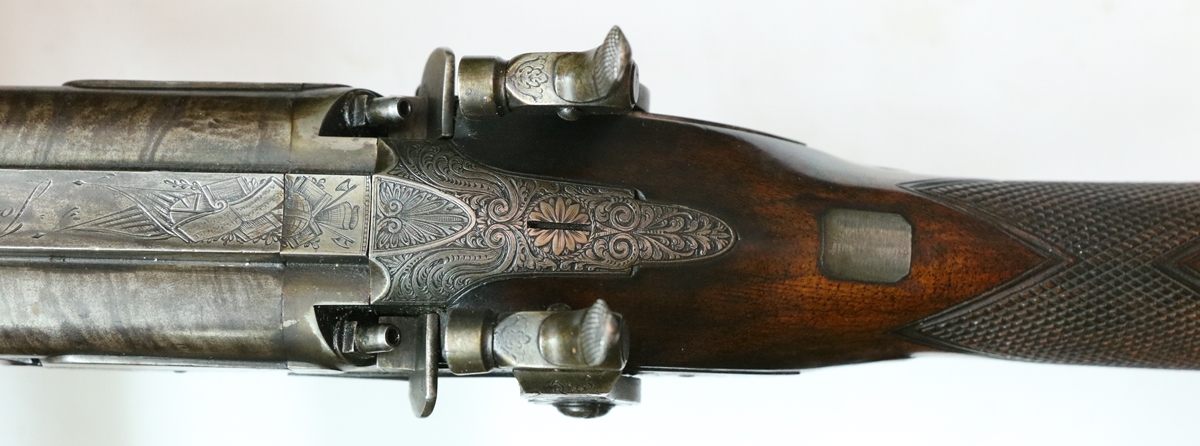
8) Everthing looks OK from on top although the breech plug doesn’t align perfectly with the rib – but the engraving IS continuous across the joint.
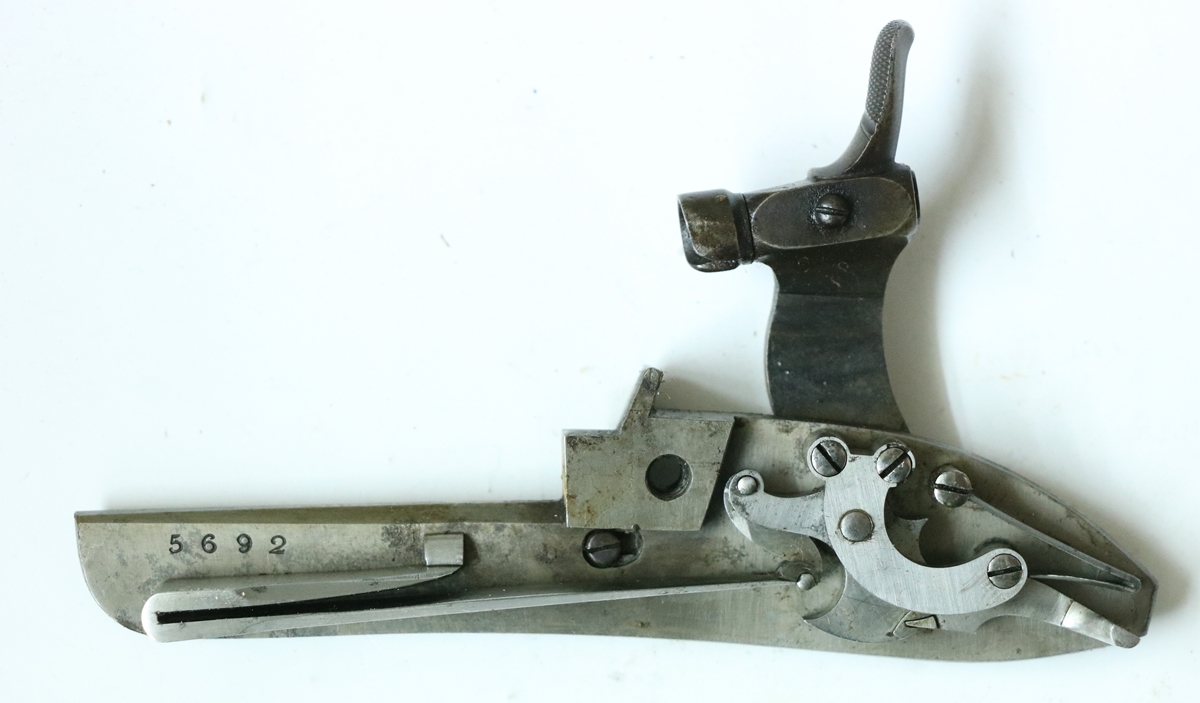
9) The locks have the number 5692 very clearly stamped on them. The trigger guard tang also has the number 5692 engraved on it and looks original.
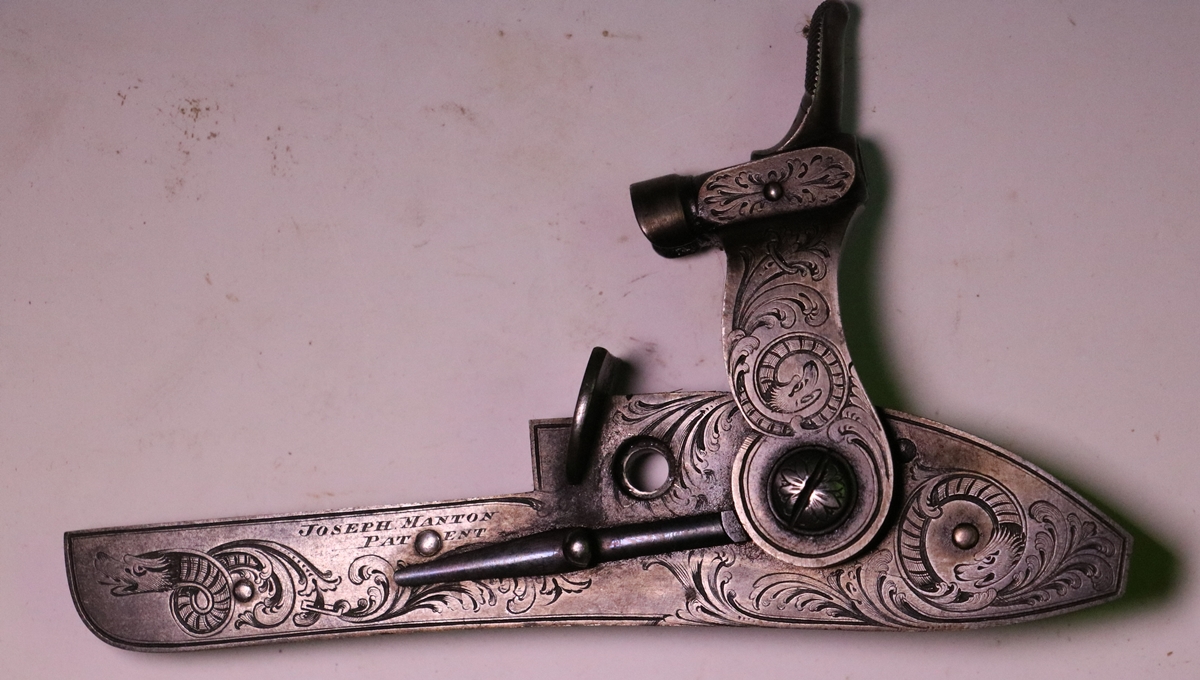
10) The locks have the classic Joseph Manton ‘sea monster’ engraving by Gumbrell that was seen on his guns around 1820 – 1828? Oviously the front safety catches were not intended when the locks were made and engraved.
Now we can begin the speculation if you are still with me!
A good point to start is the locks –clearly made by Joseph Manton around 182X (on grounds of percussion caplock, engraving and style) or so and clearly numbered for 5692 and so intended for an 1812 gun of his. The locks have the sliding safety catches which can’t realistically be contemporary with their manufacture(?) but almost certainly a later modification but are unusual on shotguns, being much more usual on rifles, (and introduced at a later date then the 1820s? – maybe 1830 – 1850?). If he had wanted to put a safety catch on a gun in 1828 he would almost certainly have used one behind the cock intercepting the tumbler not the cock itself as on pistols of that era. Joe Manton didn’t make very many rifles. When you add in the grip safety, which looks like a retrofit on account of Manton claiming to have invented it and it having another gunmaker’s name on it (grip safetys were not in fashion for long as they are pretty unreliable) The grip and cock safety together might suggest that it was possibly converted from a rifle (unlikely) but more likely that it had a very cautious owner at some time – possibly at conversion but probably some time after – possibly in two phases, grip safety and then sliding safety. The condition of the blueing of the sliders suggests that the gun wasn’t used much if at all after they were fitted ? The gun has not had a lot of wear at any time – maybe some prior to conversion, but relatively little use as a percussion gun as there is almost no corrosion around the nipples on the breeches.
The stock and furniture seem OK for 1812, and the number 5692 on the trigger guard tang is almost certainly original so I’m inclined to put it all down as original – the engraving throughout is consistent in quality and design and could date from a few years earlier than the Sea Monster lock engraving.
The barrels are interesting – the signature etc is right for the serial number date of 1812 ( used up to 1816). There is no gold or platinum stamp on the breeches, but they are very small and maybe not wide enough to take his stamp. It looks as if they have been struck off and renumbered and rebrowned and reproofed but I believe that the gun has been untouched in the same family for many years and it is quite possible that the work was done when the gun was converted or when one or other of the safety devices were added – it is almost certainly not a recent rebrowning. While it is possible to speculate that the gun was at one time a rifle and has been rebarreled, one would have to allow that the present barrel was contemporary with the original 1812 date or else re-signed in perfect imitation of the earlier form.
My current guess is that the gun was built as a flintlock 22 bore shotgun in 1812 and carefully converted by Joseph Manton to caplock in about 1828 (say 1825 – 1830). At some point it was owned by a hyper cautious owner who had the safety grip added – maybe by John Blisset himself ( he became Blisset and Son in 1867). It is possible that being very cautious the owner had the barrels reproofed at that time or they may have been done at the time of conversion, although Manton did not always send guns to the proofhouse – he preferred his own hydraulic test. I incline to think that the sliding safety is somewhat later than the grip safety ( I’ve only seen it on guns of 1840 to 1860) and so may have been added later.
So its tentative history ( a guess!) ;
1812 made by Joseph Manton as a 22 bore flintlock shotgun
1828 ish converted by Joseph Manton to caplock
1830 ish grip safety added – ?by John Blisset? date based loosly on level of wear. & reproofed?
(1840 -1850) ?? front safety catches added and reproofed(?) Not much used thereafter?
I’m sure I’ll be proved wrong – I will take the gun to Geoff Walker at ‘The Flintlock Collection’ as he knows his Mantons much better than I do.
OMG what a wonderful bedtime story to tell his grandchildren, I’m sure the owner will be thrilled with your views . I knew when I first handled the little gun it had an interesting story to tell it was talking to me but I couldn’t understand the language,thanks Tim for your wonderful translation.Truly a fantastic time in history to have been involved in the gun trade . The skills involved to turn one action into another must have been hard earned.A wonderful appraisal Tim .From mantle piece curio to a story of our skilled heritage . I will be interested to hear Geoffs comments. Thanks again Tim ,Derek .